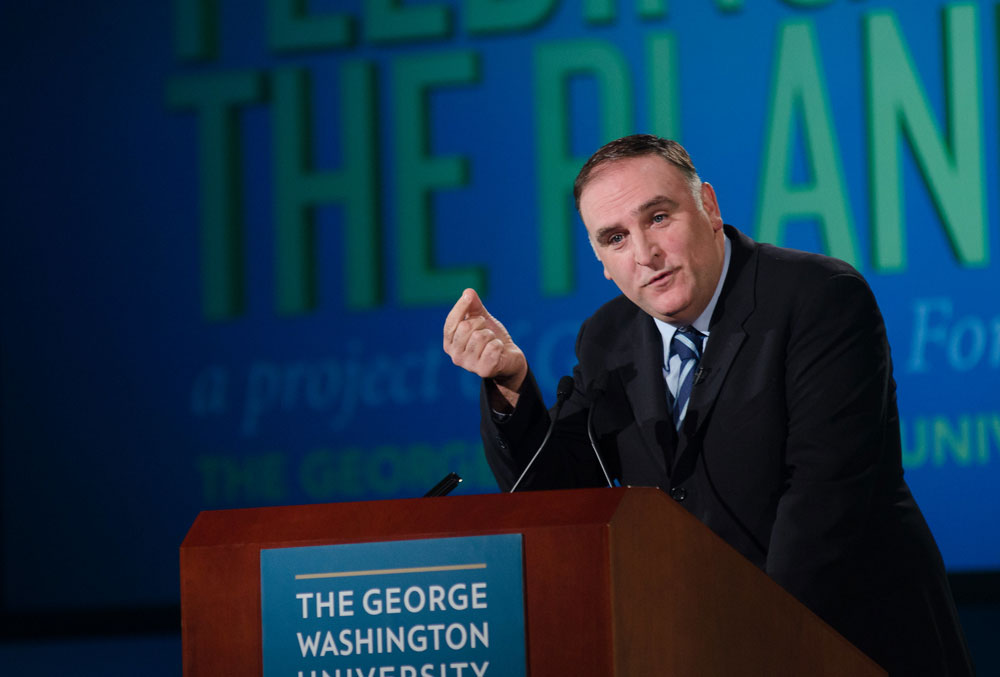
December 2019; Smithsonian Magazine
At NPQ, we have regularly featured the work of José Andrés. When the nonprofit that José Andrés helped start, World Central Kitchen—founded in 2011 to help Haiti build its culinary capacity post-earthquake—came to Puerto Rico after Hurricane Maria, the results were, to say the least, impressive.
As NPQ’s Nancy Young wrote at the time, “Soon, World Central Kitchen would be working out of 18 kitchens—including the central production area in the Coliseo de Puerto Rico—providing 120,000 hot meals and sandwiches to all 78 municipalities on the island each day.” In response, in 2018 Andrés won the James Beard Foundation’s “Humanitarian of the Year” award. Now, whenever there is a disaster—be it an earthquake in Southern California or fires in Northern California, or indeed, anywhere around the world, one expects WCK to be there.
Andrés credits DC Central Kitchen, a nonprofit in his home Washington DC region dedicated to fighting hunger by training unemployed adults, often formerly incarcerated, to have culinary careers, for helping to inspire his work. Robert Egger, who is a founder of DCCK, is now on the WCK board.
Despite its successes, the path was not always smooth. In Puerto Rico, as the New York Times reported back in 2017, the Federal Emergency Management Agency (FEMA) at first didn’t quite know what to do with the chef. But facts were facts: “No other single agency—not the Red Cross, the Salvation Army nor any government entity—has fed more people freshly cooked food since the hurricane, or done it in such a nurturing way.” It was a dramatic change in how food aid occurred, one that led the Times to suggest that WCK might “change how aid is given.”
Sign up for our free newsletters
Subscribe to NPQ's newsletters to have our top stories delivered directly to your inbox.
By signing up, you agree to our privacy policy and terms of use, and to receive messages from NPQ and our partners.
Bob Ottenhoff, CEO of the Center for Disaster Philanthropy, which helps donors make strategic choices related to domestic and international emergencies, noted in that article that the secret sauce that made the WCK model work was logistical and technical experience. As Ottenhoff told the Times, “chefs are starting to say, ‘Look, people are in need of not just food but good food, and we know how to serve large quantities of good food very quickly.’”
So how does this work? Jane Black in Smithsonian Magazine provides some details. Traditionally, notes Black, “feeding disaster victims has been the responsibility of the same relief organizations that provide shelter and medical care, and most of the time the food is an afterthought: meals cooked in expensive mobile kitchens or, worse, MREs, military-style Meals Ready to Eat.”
Partnering with local providers not only leads to better tasting food and helps support local food economies, it is also more cost effective. As Black explains, WCK sources food locally, and “wrangles local chefs and volunteers to cook it in nearby commercial kitchens…on average, a hot meal prepared by World Central Kitchen costs between $2.50 and $4—and much of that money goes to pay farmers, cooks, or the guy driving the food truck. The average cost of an MRE is $8 to $10.”
Nate Mook, WCK’s executive director, tells Black, “People ask, José, how do you get the food? He always looks at them like they’re crazy. ‘I’m a chef. That’s what I do. I get food.’ Our model is entirely different from the way it’s always worked. We’re software, not hardware.”
Correction: This article has been altered from its initial form. Although Robert Egger is on WCK’s board, the chair of that board is Rob Wilder, who is himself on the board of DCCK.











